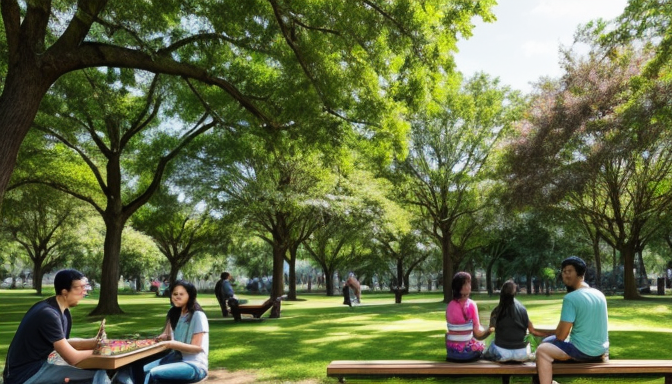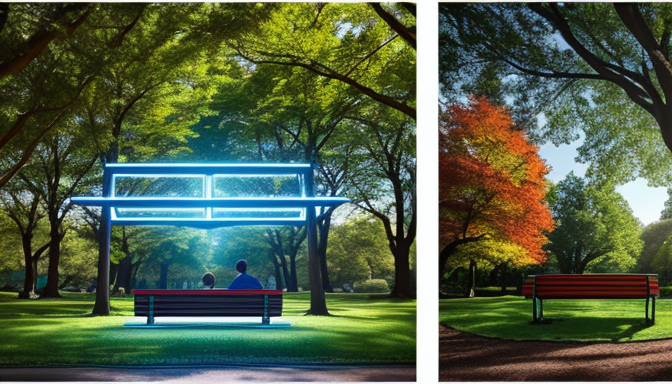In today’s fast-paced world, it feels like technology is both a friend and a foe. We wake up to the sound of our smartphones buzzing with notifications, and before we know it, we’re scrolling through social media, checking emails, and diving headfirst into the digital realm. While this connectivity offers countless benefits—like staying in touch with loved ones and accessing information at lightning speed—it can also lead to a sense of overwhelm. Have you ever found yourself glued to a screen, missing out on the beautiful world around you? It’s a common struggle, and you’re not alone.
As we navigate this digital landscape, it’s crucial to recognize how technology shapes our daily lives. From remote work that blurs the lines between home and office to the addictive nature of social media, the digital world can easily consume our attention. The challenge lies in finding that sweet spot where we can enjoy the perks of technology without sacrificing our real-life connections. Think of it like walking a tightrope—one misstep, and we could tumble into the abyss of digital overload.
So, how do we achieve this balance? It’s all about being intentional with our time. For instance, setting boundaries on screen time and prioritizing face-to-face interactions can help us reconnect with the world beyond our devices. Remember, life is happening all around us, and sometimes, the best moments are the ones we share in person. Let’s embark on this journey together and master the art of balancing our digital lives with the richness of real-life experiences.
Understanding Digital Overload
In today’s fast-paced world, technology is like a double-edged sword. On one hand, it connects us to friends, family, and colleagues across the globe; on the other, it can lead to a state of digital overload. Have you ever felt that overwhelming urge to check your phone, even when you know you should be enjoying a meal with loved ones? This constant need for connectivity can create a significant disconnect from our real lives.
Digital overload manifests itself in various ways. You might notice signs such as increased stress, irritability, or even a sense of emptiness. It’s like being in a crowded room yet feeling utterly alone. According to studies, excessive screen time can contribute to anxiety and depression, impacting not just our mental health but also our relationships. Imagine trying to have a heart-to-heart conversation while one person is glued to their screen; it’s a recipe for disconnection.
So, how does technology shape our daily lives? From the endless scroll of social media feeds to the demands of remote work, it’s easy to get lost in the digital abyss. To illustrate, consider the following table that highlights the impact of digital engagement on our well-being:
| Aspect | Positive Effects | Negative Effects |
|---|---|---|
| Social Media | Connection, Community | Isolation, Comparison |
| Remote Work | Flexibility, Productivity | Burnout, Distraction |
| Digital Wellness | Access to Information | Overstimulation, Anxiety |
Recognizing these patterns is the first step towards achieving a healthier balance. By understanding the nuances of our digital engagement, we can take meaningful steps to reconnect with the world around us.

Strategies for Reconnection
In a world where technology shapes our daily lives, from the allure of social media to the demands of remote work, it’s easy to feel like we’re drowning in a sea of screens. Have you ever found yourself scrolling mindlessly through your phone, only to realize hours have passed? This is a common symptom of digital overload, and it can leave us feeling disconnected from the world around us. To combat this, we need to embrace that help us reclaim our time and mental space.
One effective approach is to set designated tech-free zones in your home. Imagine your dining table as a sanctuary where conversations flow freely without the interruption of notifications. By creating these spaces, you encourage meaningful interactions with family and friends. Additionally, consider scheduling regular “digital detox” days. These are days where you intentionally unplug from all devices, allowing you to engage fully with your surroundings. You’ll be surprised at how refreshing it feels to enjoy a hike or read a book without the constant buzz of your phone.
Moreover, try to replace some of your digital interactions with face-to-face ones. Instead of sending a quick text, why not invite a friend for coffee? Or, if you’re working remotely, set up video calls that mimic in-person meetings. These small shifts can significantly enhance your connections and improve your overall well-being.
Ultimately, the goal is to find a balance that allows you to enjoy the benefits of technology while still nurturing your relationships and mental health. Remember, the real world is vibrant and full of opportunities waiting to be explored!
Frequently Asked Questions
- What is digital overload?
Digital overload refers to the overwhelming feeling you get from constant connectivity and excessive screen time. It’s like trying to drink from a fire hose—too much information can lead to stress and anxiety!
- How can I recognize signs of digital fatigue?
Look for symptoms like irritability, trouble focusing, or feeling disconnected from friends and family. If scrolling through your phone feels more like a chore than a joy, you might be experiencing digital fatigue.
- What are some effective strategies to reduce screen time?
Try setting specific “no screen” hours, engaging in outdoor activities, or picking up a new hobby. Think of it as a digital detox—just like a juice cleanse, but for your mind!
- How can I enhance face-to-face interactions?
Make it a point to schedule regular meet-ups with friends or family. Even a simple coffee date can do wonders for your mental health and help you reconnect with the real world.
